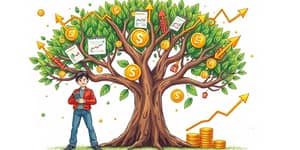Debt can feel like an overwhelming burden, but with the right information and tools, it can be conquered. In this guide, we break down complex concepts into actionable steps that empower you to regain control of your finances.
Understanding the Debt Landscape
In 2025, reducing debt emerged as the top financial priority for Americans, with 42% ranking it first among their goals. By contrast, saving for major purchases and retirement planning trailed at 21% and 14%, respectively. Nearly all Americans (97%) set financial objectives, yet almost 90% anticipate obstacles—too many expenses (38%) and high existing debt (30%).
Beyond personal finances, global public debt reached an unprecedented $102 trillion in 2024. OECD countries are on track to issue $17 trillion in sovereign bonds by 2025, up from $14 trillion in 2023. Developing economies, although representing less than a third of global debt, face the steepest repayment challenges, often forced to choose between debt service and social spending.
Key Challenges in Managing Debt
On the individual level, obstacles include unexpected expenses and stagnant income, tempting overspending, and multiple financial obligations competing for limited resources. Late fees and missed payments exacerbate the problem by damaging credit scores.
Nations, too, confront hurdles: high debt-service costs crowd out social investment, while complicated and opaque instruments undermine transparency and trust. Without clear reporting, both individuals and governments struggle to make informed decisions.
Proven Personal Strategies for Debt Reduction
Adopting a structured plan is essential. Begin by cataloging each debt: amount owed, interest rate, and due date. Once you have a clear picture, implement strategies that fit your situation.
- Inventory and prioritize debts by interest rate or size.
- Follow the 50-30-20 budgeting rule to allocate funds.
- Make more than minimum payments on each balance.
- Automate payments to avoid late fees and missed due dates.
When tackling multiple debts, choose between the snowball method for quick wins or the avalanche method for long-term savings. The snowball approach builds momentum by eliminating smaller balances first, while the avalanche targets high-interest debts to minimize overall cost.
Leveraging Modern Tools and Technology
Financial technology has revolutionized debt management. Personal finance apps now offer automate tracking and payment scheduling, real-time alerts, and dynamic budgeting tools. By harnessing AI and machine learning, these platforms predict spending patterns, send personalized reminders, and even negotiate lower interest rates on your behalf.
Debt collectors and institutions also utilize omnichannel communication—email, SMS, chatbots, and rich messaging—to engage customers where they are. Automated outreach can improve repayment rates by as much as 20%, according to industry reports.
Behavioral Insights and Systemic Reforms
Integrating behavioral science into debt repayment plans can yield powerful results. Simple nudges—like showing progress bars or sending motivational messages—encourage timely payments. Self-service portals and user-friendly interfaces boost engagement, giving borrowers a sense of control.
At the policy level, greater transparency builds trust. Individuals benefit from clear disclosures of rates and fees, while governments strengthen investor confidence by openly reporting debt obligations. Reforms in international debt architecture, such as streamlined restructuring mechanisms, are recommended by the IMF and World Bank to prevent crises.
Global Perspectives and Policy Considerations
Emerging economies carry the heaviest burdens of rising debt costs and limited fiscal space. Without concessional finance and technical assistance, these nations risk defaulting or cutting essential services. Major institutions advocate for innovative financing solutions and transparent frameworks to ensure sustainable borrowing.
For individuals, understanding the wider context underscores the importance of responsible borrowing and transparent communication. Whether at the national or personal level, transparency remains the cornerstone of sustainable financial health.
Expert Recommendations and Next Steps
Financial planners emphasize the power of a clear plan: list debts, set realistic goals, and track progress monthly. When complexity overwhelms, seek professional guidance where needed. Credit counselors, accredited by organizations such as the CFP Board, can negotiate with creditors and set up manageable repayment schedules.
- Consult certified credit counseling agencies for personalized plans.
- Attend financial literacy workshops to strengthen money management skills.
- Leverage online resources from reputable institutions like the IMF and World Bank.
Ultimately, digital transformation is not optional. Embracing technology and behavioral insights equips borrowers and policymakers alike to tackle debt effectively. By combining time-tested strategies with cutting-edge tools, you can build a roadmap to financial freedom.
Remember, every journey starts with a single step. Begin by taking a full inventory of your debts today, set clear milestones, and celebrate each victory along the way. With dedication and the right approach, the burden of loans can be lifted—paving the path to a stress-free, empowered future.
References
- https://www.cfp.net/news/2024/12/reducing-debt-is-americans-no-1-financial-priority-for-2025-cfp-board-research-finds
- https://nobelbiz.com/blog/key-trends-in-debt-collection/
- https://extension.wvu.edu/youth-family/finances/blog/2025/04/01/smart-strategies-for-effective-debt-management
- https://bridgeforce.com/insights/debt-collection-trends-reshaping-2025-strategies/
- https://www.imf.org/en/Blogs/Articles/2025/06/12/disclosing-public-debt-boosts-investor-confidence-cuts-borrowing-costs
- https://www.oecd.org/en/publications/2025/03/global-debt-report-2025_bab6b51e.html
- https://unctad.org/publication/world-of-debt
- https://www.worldbank.org/en/topic/debt










